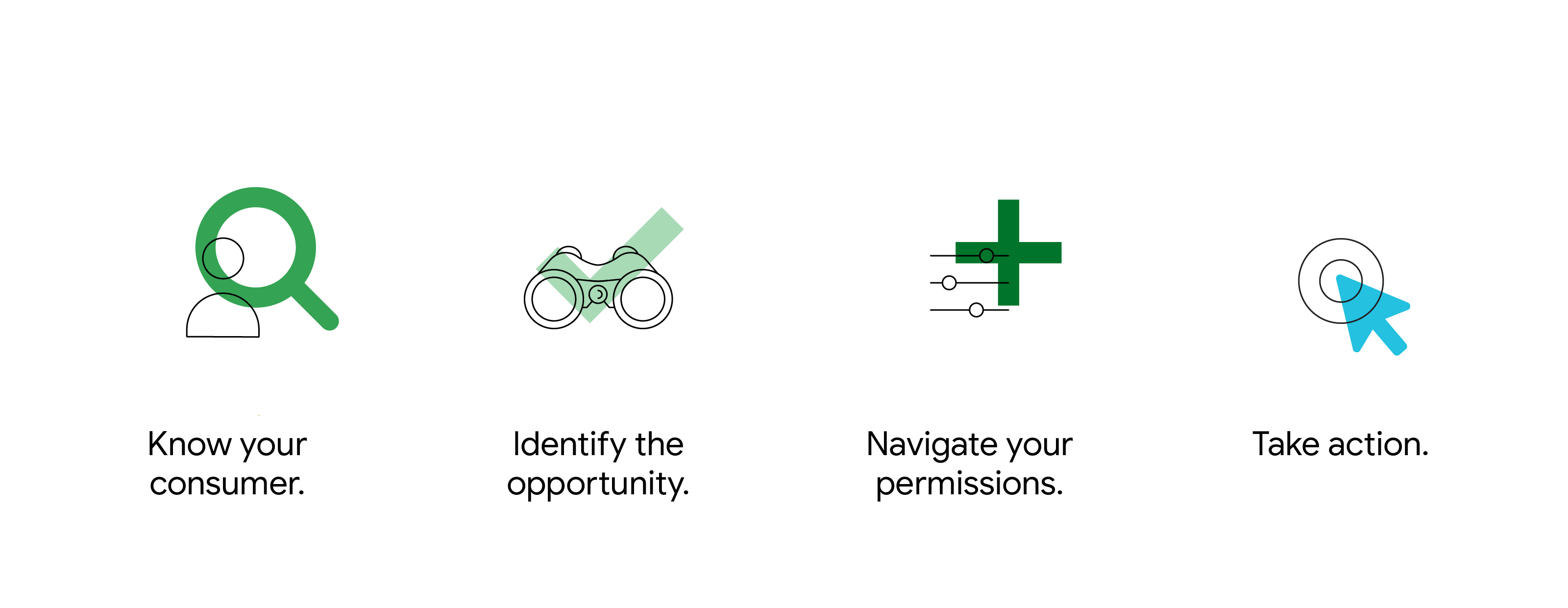
For marketers, the future doesn’t lie in better retargeting. To truly change the game, marketers must understand the needs and aspirations of their customers. The question to ask isn’t “What can I sell this person?” It’s “What does this person want?” That question unlocks so much more. For instance, maybe someone wants to accomplish a particular goal or feel a sense of security.
When we focus on delivering meaningful information and experiences, it’s possible to get more creative about the type of solutions that can meet people’s needs. In a recent study, we found that people are actually open to ads that dig a bit deeper. We also found that people are quick to spot the difference between gimmicky ad personalisation and something that’s legitimately helpful.
The future of marketing is about communicating meaningful messages that deliver consumer value and earn brand ROI, more so than messages that garner a conversion. We must go beyond demographics or psychographics — even marketing to explicit need states, such as “reassure me I’m buying the right product for my needs” — to embrace a more holistic view. That will enable us to deliver a meaningful message at just the right time and through the right channel. And advances in automation make it all possible.
To see how automation can make connections with people and why it works, we recently conducted a research series called Rethinking Readiness. We sought to understand the types of benefits people seek from brands, where in the journey they need those benefits, and how ads can deliver on those needs in meaningful ways.
Addressing needs is good for business
Our research makes it clear that addressing human needs is good for business. We imitated elements of Google’s automation tools and information cues to create and deliver ads to participants in our study. We found they drove a 15% higher purchase intent and 30% higher click-through when compared to ads with only basic personalisation.1

This doesn’t mean that every second of every ad has to be crammed with meaning. Imagine messaging from an auto brand that highlights top car features most likely to be of importance to the person seeing it — perhaps safety features for one person and design for another. When ads had just a few components of meaningfulness, we saw double-digit increases in purchase intent (up to 12% higher) and click-through rates (up to 25% higher).2 This was especially true when someone saw an ad from a brand that wasn’t already a preferred brand. These ads worked because by being personal, not personalised, they were meaningful.
We also explored past purchases and different touchpoints, and we asked consumers in an opt-in panel exactly when in the purchase journey they were looking for what kind of help and outreach from a brand. We learned that people want evolving types of support, depending on the type of product they’re shopping for and how close they are to making a purchase.
When looking at purchase journeys for essentials, such as shampoo or dog food, people follow consistent needs patterns. We call them “impact territories” — the ways people want brands to impact their lives, not just their purchases, during the journey. Prior to making a purchase, people are looking for guidance about what to buy, tools they need to succeed, and help smoothing the path to purchase. When making a purchase people expect brands to lighten the mood and make the purchase fun or uplifting. And after a purchase, people want the brand to continue removing barriers (such as for reordering), help them stand out, and open their eyes to ongoing or new uses.
What help consumers want when buying essentials

Embrace the meaningful
To deliver a more personal experience, brands must first build relationships. And those relationships will determine a brand’s ability to have a meaningful impact, generating growth and long-term value.
First and foremost, know your consumer. Clearly understand your relationship with the recipient — the roles you play and the investment you have in one another. How well do you know them? What is their relationship with your product or category? From there you can more easily identify the opportunity. Recognise that the recipient has, or may have, a specific need at a given moment. Are they actively looking for something? What is the meaning behind their need? Automation can help you deliver the kinds of deep meaning we’re talking about here, with time- and cost-efficiency and at scale.
While every ad campaign will have some detractors, ads that were highly meaningful in our tests triggered very little negative reaction. On average, fewer than 6% in any test expressed negative sentiment with the level of personal details used in an ad message.3 Our takeaway? When ads are genuinely helpful, consumers see the conversion of their preferences into value. As a result, they feel pleasantly surprised and understood, and those feelings translate into greater expressed intent to buy now and greater brand love and trust for the future.
4 steps to building a relationship

A framework for response, recovery, and beyond
This year has seen major disruptions in business around the globe. People’s needs and behaviors have shifted. For example, our data shows that 32% of people in the U.S. (and between 21% and 60% globally) have shopped with a new retailer since the onset of COVID-19.4
It’s more important than ever to understand those shifts and the underlying needs informing them. If brands better understand what is meaningful to people, it’s possible to leverage those insights, pair them with automation, and quickly identify and satisfy dynamic consumer needs. An approach to marketing guided by this deep level of helpfulness will set up marketers for business success, regardless of what the coming year brings.





